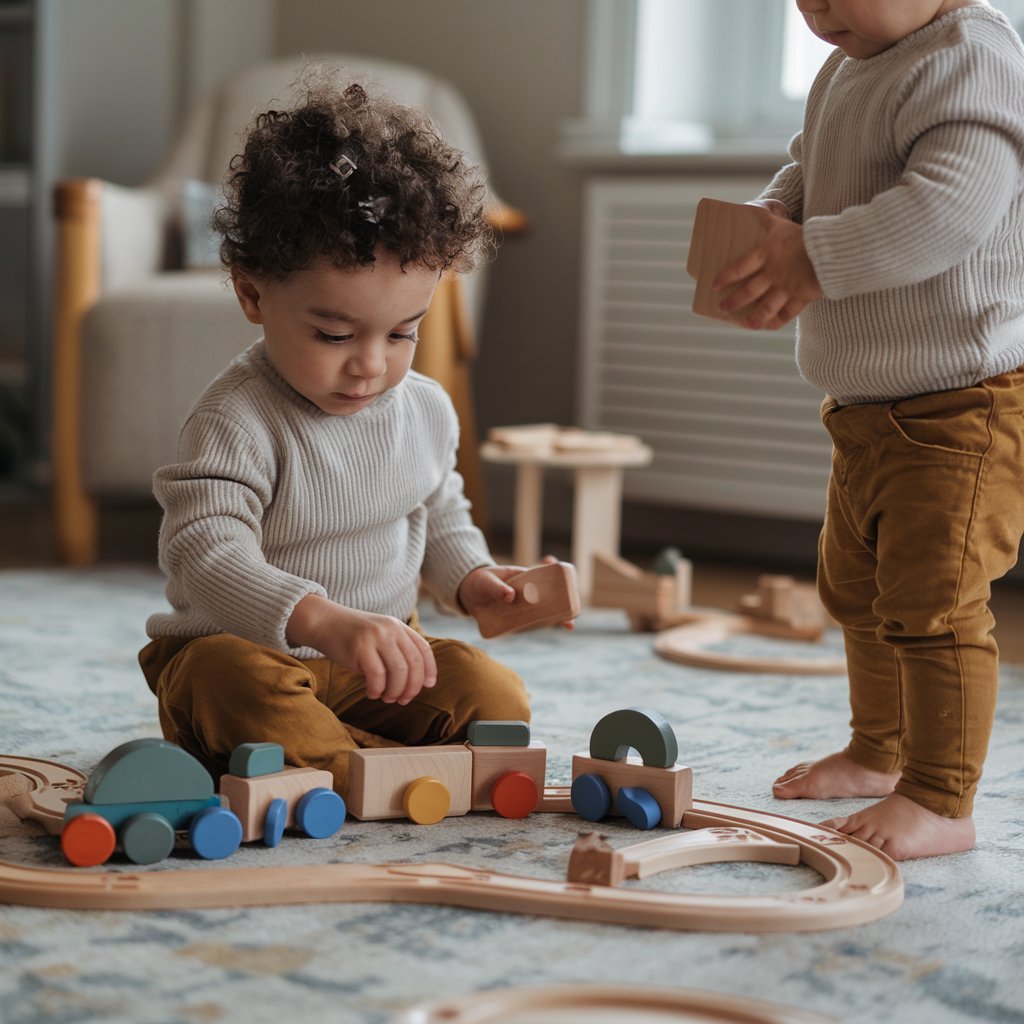As technology continues to influence every aspect of modern life, the way children play is also evolving. However, the value of traditional materials like wood has not been lost in the shuffle. In fact, interactive wooden toys are now merging the best of both worlds—natural, tactile materials and engaging, interactive play. These toys provide children with a way to engage their imagination, develop fine motor skills, and learn in a dynamic and eco-friendly environment. Let’s explore why interactive wooden toys may very well represent the future of play.

1. The Perfect Blend of Tradition and Innovation
Interactive wooden toys bring together the timeless qualities of wood and the interactive features of modern play. While wooden toys have always been celebrated for their simplicity, adding interactive elements like movable parts, sounds, or light features enhances the experience. This blend of old and new allows children to enjoy the sensory and developmental benefits of wooden toys while experiencing the engagement typical of tech-driven toys.
- Examples of innovative features: Magnetic connections, interactive pieces that spin or twist, lights and sounds that activate with movement.
- Benefits for play: Enhancing traditional play patterns with added features that encourage curiosity and discovery.
2. Encouraging Hands-On Learning and Creativity
Interactive wooden toys are designed to be manipulated, encouraging children to use their hands and explore different ways of engaging with each toy. These toys often incorporate educational elements—like numbers, letters, or colors—that can light up or respond when touched. This hands-on, multisensory experience is not only engaging but also supports memory retention and understanding of basic concepts.
- Examples of learning features: Light-up numbers for counting, animal sounds for identification, or letters that respond to touch.
- Benefits for creativity: The freedom to explore stimulates creative thinking and problem-solving skills in young learners.
3. Fostering Motor Skills and Coordination
The interactive elements of these toys often require precise movements that promote fine and gross motor skills. By twisting, stacking, or pressing parts, children develop coordination and control. Toys that involve fitting pieces together, balancing structures, or arranging components help children refine their motor skills while enjoying a playful and satisfying experience.
- Examples of motor skills activities: Stackable magnetic blocks, twistable gears, and wooden puzzles with light-up pieces.
- Benefits for physical development: Enhancing dexterity, spatial awareness, and hand-eye coordination.
4. Building Social Skills and Cooperative Play
Interactive wooden toys often feature components that encourage children to play together, creating opportunities for cooperative play. This can be especially beneficial when the toy includes group-oriented elements like team-building games or storytelling activities. By interacting with these toys, children learn to share, take turns, and work collaboratively, strengthening their social skills in the process.
- Examples of cooperative features: Games that require joint assembly, interactive storytelling kits, and team-based puzzles.
- Benefits for social skills: Encouraging teamwork, empathy, and clear communication.
5. Eco-Friendly and Durable: A Sustainable Choice
Wooden toys are known for their durability, and interactive wooden toys maintain this longevity while adding more engaging features. With their sustainable materials and durable construction, these toys are eco-friendly and capable of withstanding long-term play. Many interactive wooden toys are designed with renewable or recycled materials, allowing parents to make a conscious choice that benefits the environment.
- Eco-friendly aspects: Toys made from responsibly sourced wood, non-toxic paints, and recyclable components.
- Durability: Their sturdy design ensures they can be passed down, reducing the need for frequent replacement and lowering waste.
6. Nurturing Focus and Reducing Screen Time
As interactive toys without digital screens, these wooden toys offer an alternative to screen-based play. Interactive wooden toys can hold children’s attention without the hyper-stimulation associated with electronic devices, promoting a more focused and immersive experience. By encouraging hands-on play without screens, these toys provide a break from screen time and encourage children to engage deeply with their activities.
- Examples of screen-free play: Interactive learning boards, sensory-based wooden games, and sound-making puzzles.
- Benefits for focus: Helping children develop attention spans without over-relying on digital devices.
Conclusion
Interactive wooden toys represent an exciting future in children’s play, offering a perfect blend of traditional tactile experiences and modern interactive features. With benefits that span sensory development, creativity, social skills, and sustainability, these toys allow children to learn and play in meaningful ways. By choosing interactive wooden toys, parents can give their children a unique play experience that engages their curiosity and imagination, all while supporting eco-friendly values. As the demand for sustainable and enriching play options grows, interactive wooden toys are poised to become essential in the future of play, bringing innovation and tradition together in the most beneficial ways.
